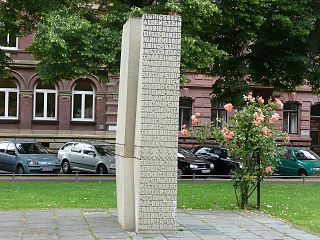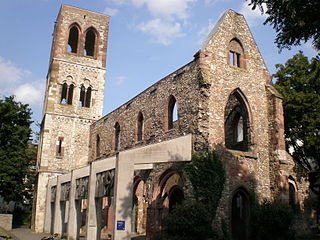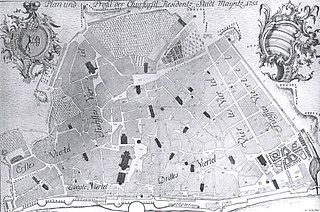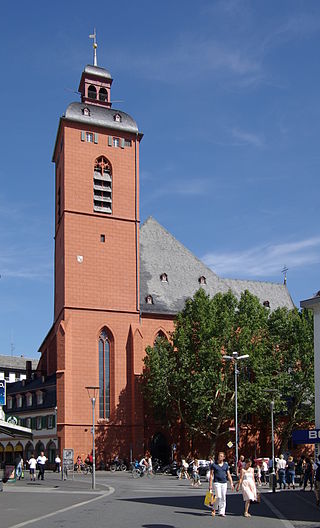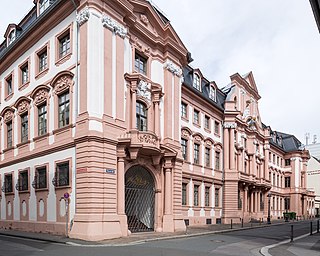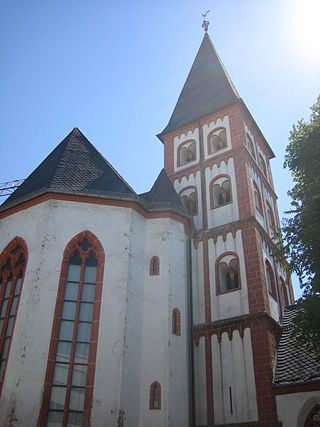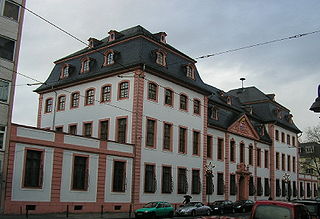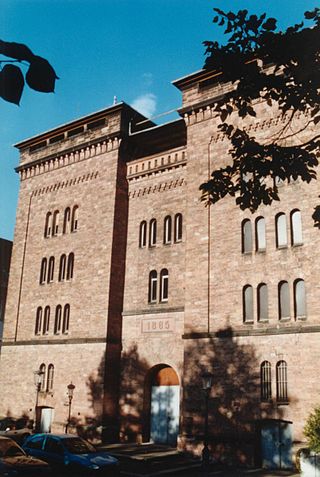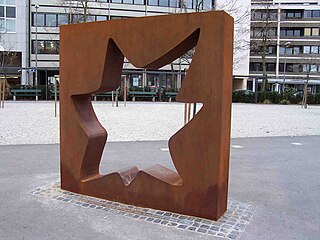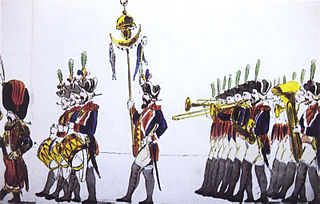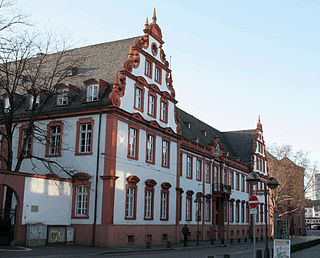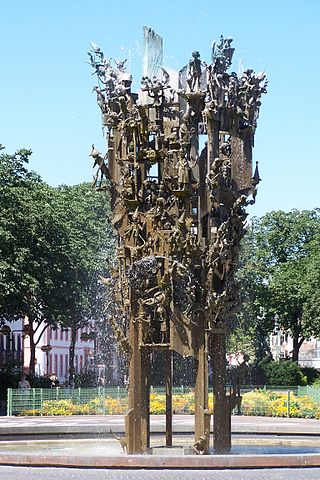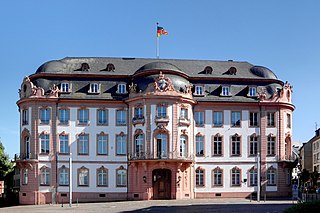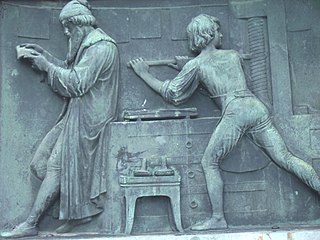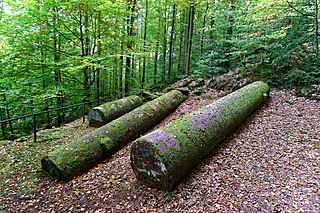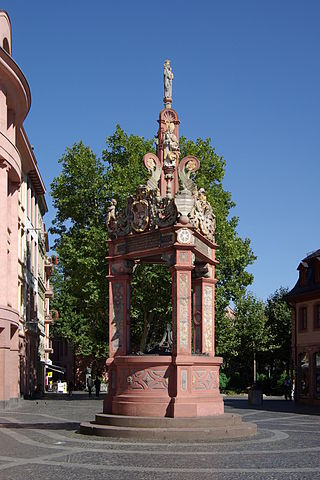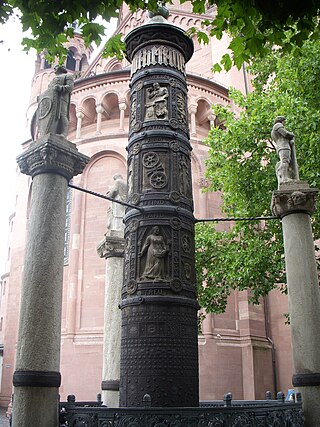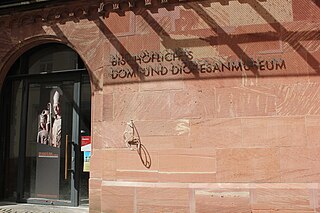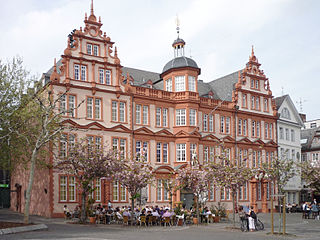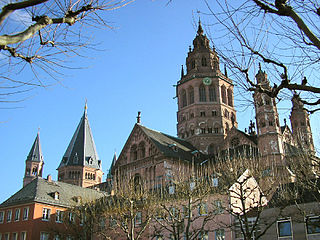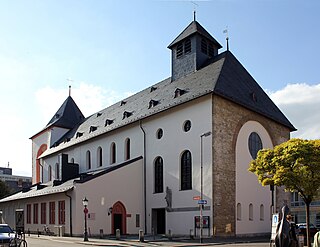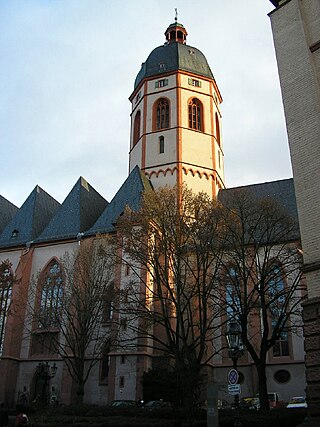Self-guided Sightseeing Tour #1 in Mainz-Kastel, Germany
Legend
Guided Free Walking Tours
Book free guided walking tours in Mainz-Kastel.
Guided Sightseeing Tours
Book guided sightseeing tours and activities in Mainz-Kastel.
Tour Facts
6.4 km
79 m
Experience Mainz-Kastel in Germany in a whole new way with our self-guided sightseeing tour. This site not only offers you practical information and insider tips, but also a rich variety of activities and sights you shouldn't miss. Whether you love art and culture, want to explore historical sites or simply want to experience the vibrant atmosphere of a lively city - you'll find everything you need for your personal adventure here.
Individual Sights in Mainz-KastelSight 1: Reduit
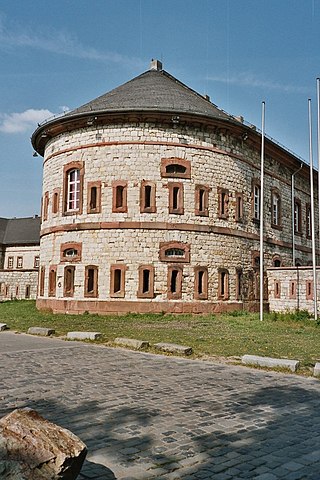
The building in Mainz-Kastel, now known as "the Reduit", originally served as the Reduit barracks of the Kastel bridgehead of the Mainz Federal Fortress. Today, the plant is located in the Wiesbaden district of Mainz-Kastel between the Rhine and the (former) Taunus Railway, directly at Mainz-Kastel station.
Sight 2: Mahnmal der Deutschen Einheit
The Memorial of German Unity, also known as the "Divided Germany" Memorial, as well as the "Memorial of the German East" after its inauguration and before reunification, was inaugurated on 16 June 1961 on Mainz's Fischtor-Platz on the occasion of the anniversary of the popular uprising in the former GDR on 17 June 1953 with the inscription "Germany is indivisible". It contains mostly the names of former German cities east of the Oder and Neisse rivers that were under Polish or Russian administration at the time, and of cities in the former German Democratic Republic.
Sight 3: Eisenturm
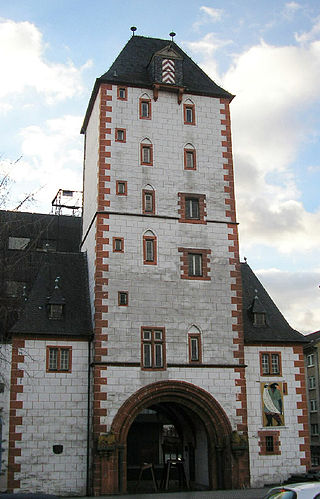
The Iron Tower is a mediaeval tower dating to the early 13th century, and modified in the 15th century, which with the Wood Tower and the Alexander Tower is one of three remaining towers from the city walls of Mainz, Germany. Its name derives from the Iron Market (Eisenmarkt), which was held in the immediate vicinity until the 19th century.
Sight 4: Karmeliterkirche
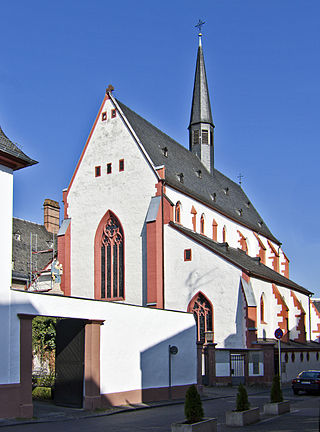
The Carmelite Church in Mainz is a listed Roman Catholic church. Since 1924 it has been used by the Carmelite mendicant order. The three-aisled Gothic basilica with turret is located in the old town at Karmeliterplatz 5.
Sight 5: St. Christoph
The church of St. Christoph in Mainz, known in German as St. Christoph zu Mainz, is an example of early gothic architecture. St. Christoph was originally built between 1240 and 1330. The church is associated with Johannes Gutenberg, who may have been baptised there.
Sight 6: St. Josefskapelle
The list of chapels in Mainz lists preserved and no longer preserved chapels in Mainz, Rhineland-Palatinate.
Sight 7: St. Quintin
The Catholic church of St. Quintin is the parish church of the oldest proven parish in the city of Mainz. Today, St. Quintin together with the cathedral community of St. Martin forms the parish of St. Martin's Cathedral and St. Quintin. Thus the cathedral priest is therefore always the priest of St. Quintin as well.
Sight 8: Jüngerer Dalberger Hof
The Younger Dalberger Hof in Mainz is a manor house of the Barons of Dalberg, completed in 1718.
Sight 9: St. Emmeran
The Catholic parish church of Sankt Emmeran in Mainz was founded in the 8th century. The Gothic church building dates back to the 13th century. The church was badly damaged in the Second World War and rebuilt in the 1960s and 1970s. Today, St. Emmeran is home to the Italian parish of Mainz.
Sight 10: Isis- und Mater Magna-Heiligtum
The Sanctuary of Isis and the Magna Mater was a sanctuary in Mainz, dedicated to Isis and Magna Mater.
Wikipedia: Sanctuary of Isis and the Magna Mater, Mainz (EN), Website
Sight 11: Neuer Brunnen
The New Fountain in the Bleichenviertel of Mainz is a building from the late Baroque. It was built in the period from 1724 to 1726 by Johannes Weydt. The most striking feature of the fountain is the approximately 12-meter-high obelisk in the center, which is covered with bas-reliefs on various themes. At its base there are a total of four sculptures, each depicting two river gods and two lions. The oval basin and the obelisk are made of red sandstone.
Sight 12: Erthaler Hof
The Erthaler Hof is an aristocratic court in Mainz, Germany. It was built as a family residence there by the Mainz bailiff in Lohr am Main, Philipp Christoph von und zu Erthal. He belonged to the Elfershausen line of the von Erthal family, who came from Franconia. As a cavalier architect and court councillor of the Electorate of Mainz, he was also responsible for the design. The execution was in the hands of Johann Michael Schmitt and Franz Anton Hermann. Construction began in 1734 and was completed in 1739. At the end of 1739, the widower Philipp Christoph moved into the Erthaler Hof with his children, before his first wife Eva Maria died in Lohr after their tenth child. It thus joins the group of baroque aristocratic courts such as the Schönborner Hof, the Bassenheimer Hof and the Osteiner Hof around Schillerplatz.
Sight 13: Telehaus
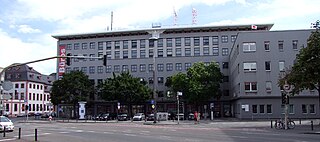
The former telegraph office in Mainz, popularly known as the Telehaus, was built between 1928 and 1930 on the south side of Münsterplatz at the junction of Schillerstraße as the result of a competition held in 1926, together with the tax office, with explicit consideration of the neighbouring baroque Erthaler Hof, at Münsterplatz 2–6.
Sight 14: Fastnachtsmuseum
The Mainz Carnival Museum shows the history of Mainz Carnival since 1837 on about 350 m².
Sight 15: Proviant-Magazin
Proviant-Magazin, also known as Körnermagazin, is a large type of building for the storage of food, which was often part of fortifications and built to be bullet-proof. The magazines were mainly used to store provisions for the military. Primarily for grain, for this reason there was usually an army bakery in the immediate vicinity or in the building itself. In Germany, the administration was subject to the Provisions Office, and this designation was transferred to the group of buildings themselves.
Sight 16: Sterne der Satire – Walk of Fame des Kabaretts
The Walk of Fame of Cabaret is a sidewalk between Proviant-Magazin and Schönborner Hof in Mainz, Germany, which is embedded with more than 40 seven-pointed irregularly shaped stars featuring the names of cabaret celebrities selected by a group of experts and honored by several sponsors for their contributions to the cabaret culture.
Sight 17: Ranzengardist
The Mainz Ranzengarde was founded in 1837 by Johann Maria Kertell and is the oldest carnival corporation within the Mainz carnival. She therefore also bears the nickname "Mother of all Mainz Guards". In 1838, with the help of the Ranzengarde, the Mainz Carnival Association (MCV) was founded, which is the oldest carnival club in Mainz.
Sight 18: Schoppenstecher
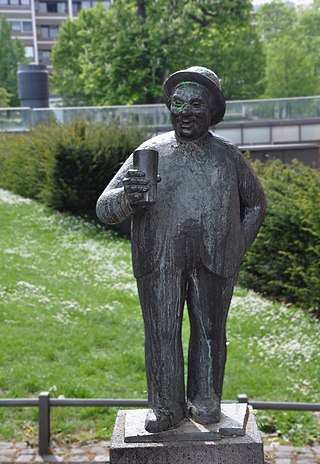
The Schoppenstecher statue is a statue on the edge of Schillerplatz in Mainz between the Schönborner Hof and the Proviant-Magazin, in the former garden of the Schönborner Hof.
Sight 19: Schönborner Hof
The Schönborner Hof is an aristocratic court in Mainz, Germany. It was the seat of the noble family of Schönborn, which was important in the Electorate of Mainz after the Thirty Years' War.
Sight 20: Fastnachtsbrunnen
The carnival fountain in Mainz is located on Schillerplatz on the corner of Schillerstraße and Ludwigsstraße. The monument is intended to symbolize the foolish season. After three years of construction, it was unveiled on January 14, 1967.
Sight 21: Osteiner Hof
The Osteiner Hof is one of several Baroque-era palatial mansions along Schillerplatz square in the German city of Mainz. The mansion, along the southern edge of the square, was built in 1747-1752 by architect-soldier Johann Valentin Thomann for Franz Wolfgang Damian von Ostein, brother of Johann Friedrich Karl von Ostein, who was prince-bishop of Mainz at that time.
Sight 22: Gutenberg-Denkmal
Monuments commemorating Johannes Gutenberg can be found in Mainz, Strasbourg and Frankfurt am Main, among other places.
Sight 23: Heunensäule
The Heunen columns, also known as the Heune columns, are round columns made of sandstone, which were originally intended for the reconstruction of the Willigis Cathedral in Mainz, which burned down in 1009. They were probably completed in the 11th century out of anticipatory business acumen in a quarry in the Bullau Mountains near Miltenberg even before the order was placed. However, the client probably opted for other supports, so that the round columns were never needed. There are said to have been 42 of the columns at one time, in the 18th century there were still 14, around 1960 only eight are known.
Sight 24: Marktbrunnen
The Marktbrunnen in Mainz is a renaissance fountain located at the ″Markt″ of Mainz. It was donated by elector Albert of Mainz and crafted in the workshop of the Mainz sculptor Hans Backoffen. The Marktbrunnen represents one of the first architectural formed decorated fountains of the renaissance.
Sight 25: Nagelsäule
The Nail Column in Mainz is a column erected during the First World War on Liebfrauenplatz in front of the east side of Mainz Cathedral, which was created as part of a German propaganda and fundraising campaign as a war nailing.
Sight 26: Bischöfliches Dom- und Diözesanmuseum Mainz
The Episcopal Cathedral and Diocesan Museum in Mainz, founded in 1925, houses works of art from two millennia in its historic rooms – the Staufen vaulted halls, the two-storey late Gothic cloister and the former chapter houses – which once belonged to the furnishings of Mainz Cathedral or the churches of the diocese. In addition, there is the cathedral's treasury, which can be reached through the chapter rooms and is located in the former St. Nicholas Chapel from the late Gothic period.
Sight 27: Gutenberg-Museum
The Gutenberg Museum is one of the oldest museums of printing in the world, located opposite the cathedral in the old part of Mainz, Germany. It is named after Johannes Gutenberg, the inventor of printing from movable metal type in Western Europe. The collections include printing equipment and examples of printed materials from many cultures.
Sight 28: St. Martin's Cathedral
Mainz Cathedral or St. Martin's Cathedral is located near the historical center and pedestrianized market square of the city of Mainz, Germany. This 1000-year-old Roman Catholic cathedral is the site of the episcopal see of the Bishop of Mainz.
Sight 29: St. Johannis
St. John's Church is located beneath Mainz Cathedral in the historical center of Mainz, Germany. This 1100-year-old church was the first episcopal see of the Bishop of Mainz. It is the oldest church in Mainz, the oldest cathedral in the Germany of today and the only preserved cathedral building from late Carolingian and early Ottonian time in Germany.
Sight 30: St. Stephan
The Collegiate Church of St. Stephan, known in German as St. Stephan zu Mainz, is a Gothic hall collegiate church located in the German city of Mainz. It is known for windows created by Marc Chagall.
Share
Disclaimer Please be aware of your surroundings and do not enter private property. We are not liable for any damages that occur during the tours.
GPX-Download For navigation apps and GPS devices you can download the tour as a GPX file.
